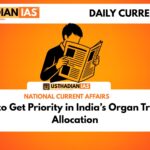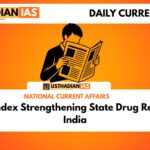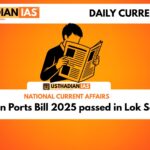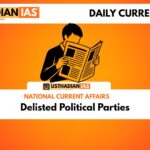Political Significance of the First Polls
Jammu and Kashmir Rajya Sabha Elections Mark Political Revival: Jammu and Kashmir conducted its first Rajya Sabha elections since the abrogation of Article 370 in 2019, marking a historic democratic milestone. The polls were held on October 23 and 24, 2025, symbolizing the revival of the region’s parliamentary representation after nearly a decade. The elections have drawn nationwide attention as a step toward restoring political normalcy in the Union Territory of Jammu and Kashmir.
National Conference Secures Majority Representation
The National Conference (NC) emerged dominant, winning three out of four Rajya Sabha seats. Party leaders Sajad Kichloo, Choudhary Mohammad Ramzan, and G.S. (Shammi) Oberoi clinched victories, while BJP candidate Sat Sharma secured the remaining seat. The results, declared on October 24, reaffirm NC’s strong presence in the local legislative landscape and reflected a renewed political momentum ahead of the upcoming Assembly elections.
Democratic Restoration After Constitutional Changes
The elections hold immense symbolic importance, being the first since Jammu and Kashmir’s reorganisation into a Union Territory. After the dissolution of the state assembly in 2018, democratic processes were halted. Now, with over 70 MLAs, including former Chief Minister Omar Abdullah, participating, the polls underscore a return to representative governance.
Static GK fact: The reorganisation of Jammu and Kashmir came into effect on October 31, 2019, creating two Union Territories — Jammu and Kashmir, and Ladakh.
Understanding the Rajya Sabha Election Process
Members of the Rajya Sabha, also known as the Council of States, are chosen through a single transferable vote system of proportional representation by elected MLAs. Jammu and Kashmir, as a Union Territory with a legislature, elects four representatives to the Upper House. Each member serves a six-year term, with one-third retiring every two years to ensure continuity in governance.
Static GK Tip: The Rajya Sabha was established in 1952, and its first Chairman was Dr. S. Radhakrishnan, who later became India’s President.
Broader Political Implications
The 2025 elections represent a shift in political alignment within the Union Territory. The NC’s performance highlights growing regional confidence and political engagement after years of administrative transition. Analysts view the outcome as a sign of stability and reintegration of Jammu and Kashmir within India’s federal democratic structure.
Historical Context
The last Rajya Sabha elections from Jammu and Kashmir were held nearly a decade ago, prior to the abrogation of Article 370, which granted special status to the state. The new elections, therefore, signify the first full restoration of parliamentary linkage between the region and the central government.
Static GK fact: Article 370 was part of the Constitution of India (Part XXI), dealing with temporary provisions for Jammu and Kashmir, and was abrogated on August 5, 2019.
Static Usthadian Current Affairs Table
Jammu and Kashmir Rajya Sabha Elections Mark Political Revival:
| Topic | Detail |
| Election Dates | October 23–24, 2025 |
| Key Political Party | National Conference (NC) |
| Winning Candidates | Sajad Kichloo, Choudhary Mohammad Ramzan, G.S. Oberoi, Sat Sharma |
| Type of Election | Rajya Sabha (Upper House) |
| Seats from J&K | 4 |
| Electoral Method | Single transferable vote system |
| Year of Article 370 Abrogation | 2019 |
| Year of J&K Reorganisation | 2019 (effective October 31) |
| Last Rajya Sabha Election in J&K | Around 2015 |
| Significance | Revival of parliamentary democracy in Jammu and Kashmir |








